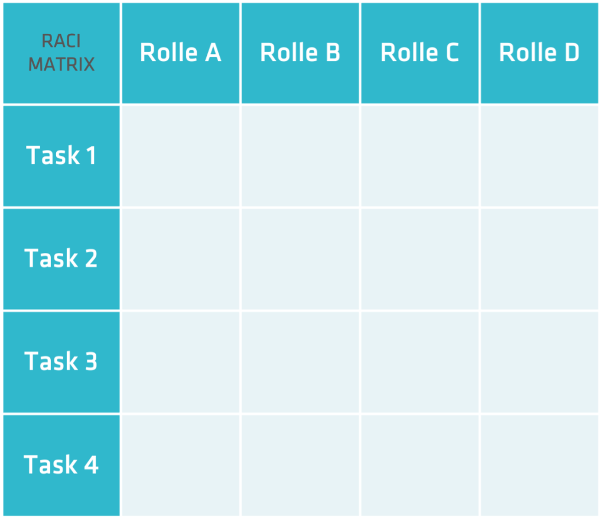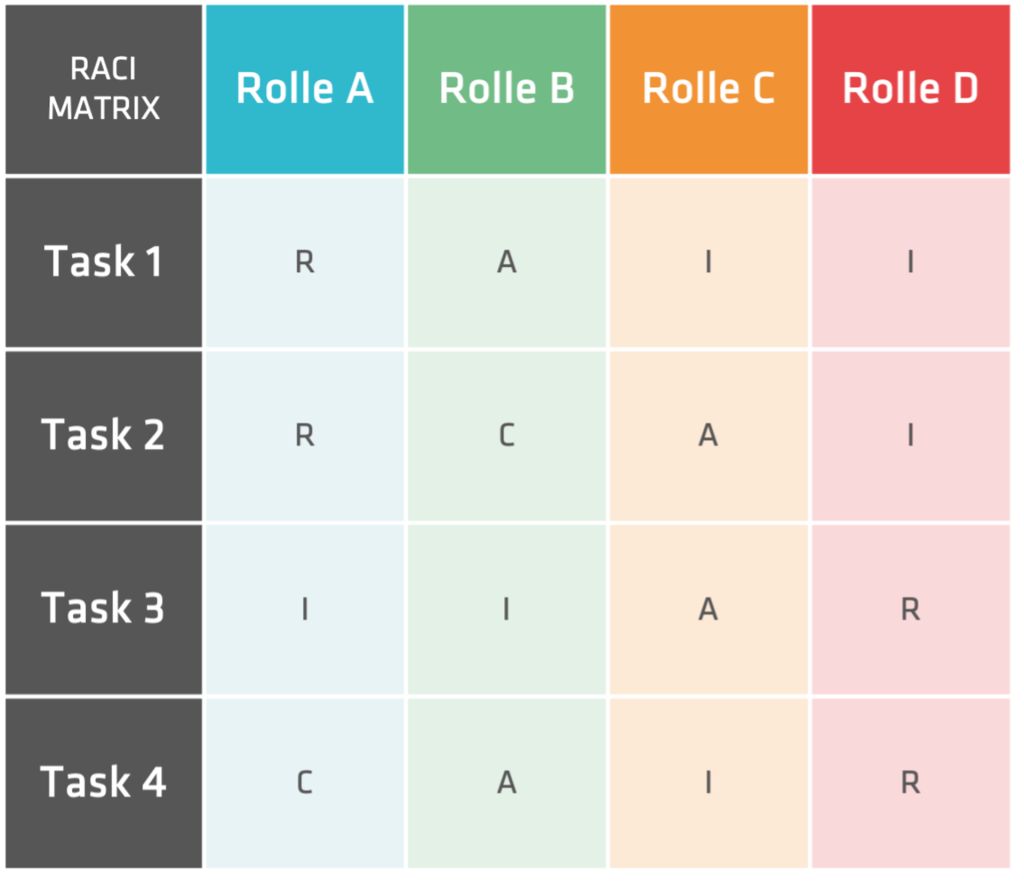Mit der Verantwortung ist das immer so eine Sache. Mal kommt sie einem gelegen, mal möchte man sie gern abgeben. Welches Szenario auch immer im konkreten Fall auftritt, klar ist – sind Verantwortlichkeiten nicht eindeutig geregelt und vergeben, kommt es zu Konflikten. Prozesse geraten ins Stocken oder müssen im schlimmsten Fall sogar gestoppt werden. Als Konsequenz stellt sich häufig die unbequeme Frage:
Whose Job was it?
Eine solche Fragen stellt man im Unternehmen ungern, denn das bedeutet meist, dass ein Prozess nicht läuft wie geplant oder ein Ziel nicht wie erwartet erreicht wurde. Eine klare Zuordnung von Verantwortlichkeiten ist daher vor allem in großen Prozessen oder Projekten mit vielen Beteiligten essenziell. Doch auch das ist manchmal nicht so einfach. Was also tun, um alle relevanten Stakeholder gut abzuholen und gleichzeitig für eine strukturierte Durchführung von Prozessen und eindeutige Verantwortlichkeit zu sorgen?
The RACI Matrix provides an easy solution to this problem.
RACI describes a way of representing responsibilities that provides a quick overview of processes or projects and can be used as a basis for further definitions. The acronym RACI stands for the various forms of responsibility. The letters describe them using adjectives:
R = Responsible:
- A person who is responsible for the implementation (even if he/she only initiates the implementation).
- In doing so, they have disciplinary responsibility and the ability to make independent decisions.
A = Accountable:
- A person who bears the cost or overall responsibility.
- As such, it often releases costs or projects and is commercially and/or legally accountable.
C = Consulted:
- A person who is not actively involved in the processing of a task (but who should be consulted/consulted because of their knowledge and experience).
I = Informed:
- A person who needs to be informed about an activity, its progress or result.
Responsible, accountable, consulted, informed - and now?
The two-dimensional matrix helps to clearly identify responsibilities.

Dimension 1: Tasks — What needs to be done? Each process, sub-process, area, or individual task is listed separately. Each task gets its own box.
Dimension 2: Responsibilities – Who is responsible for carrying out the tasks? Who is responsible? Who should be involved based on their experience, who should just be informed? This lists all the stakeholders and their roles. Each role also gets its own field.
How does RACI help me in practice?
The RACI matrix then contrasts the two dimensions and assigns tasks and roles to each other. Each field in the matrix is assigned a responsibility label. To do this, first fill the left rows of the table with tasks, processes, or attributes. The corresponding roles are assigned to the columns above. It is also possible to specify individual people or areas/departments. However, the clear recommendation is to work with rollers.
In the last step, each field of the matrix is populated with a letter (R / A / C / I).
Only one R and one A should be named for each task in order to clearly assign responsibility for implementation and accountability.
For C and I, on the other hand, multiple values can be assigned per task because more than one stakeholder may need to be consulted or informed.
This creates a matrix similar to the one shown here:

Try the RACI Matrix now
To help you quickly and clearly define responsibilities in your organization, we have prepared a free RACI matrix for you to download. How is this supposed to work?
Capture processes and roles, assign responsibilities by RACI, and instantly gain valuable insights.
